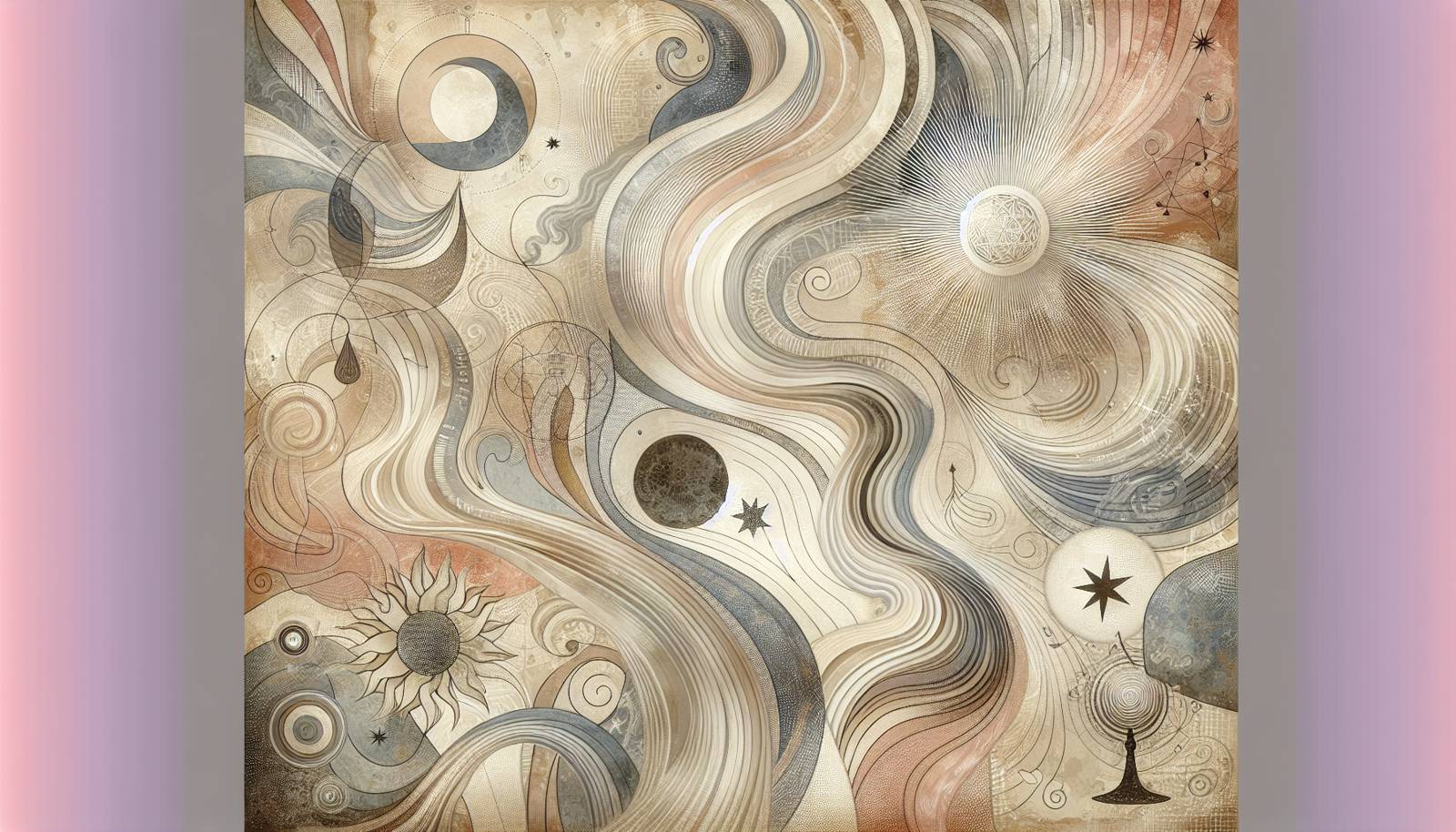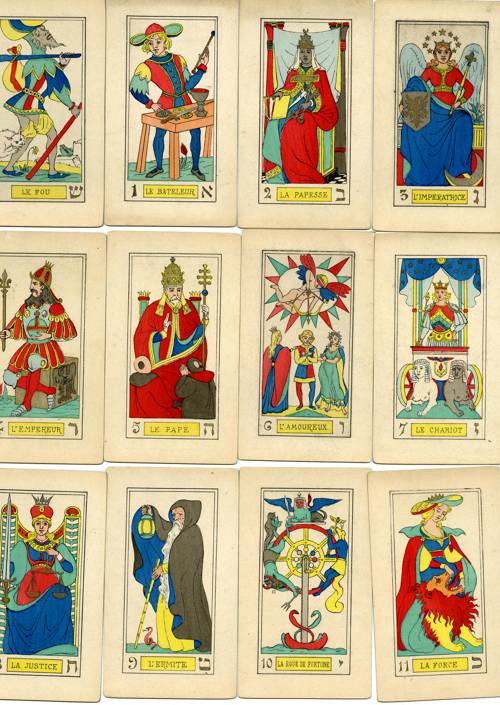
FAQ About The Influence of Tarot Art on Contemporary Design

What is the historical origin of tarot art?
Tarot art originated in the 15th century, primarily in Europe, where it was initially used for playing card games. Over time, the imagery evolved to include elaborate scenes and symbolism, reflective of the medieval and Renaissance art styles. These images later became associated with mysticism and divination practices.

How is tarot imagery used in modern graphic design?
Modern graphic designers often incorporate tarot imagery by using its rich symbols and archetypal themes to create visually engaging and meaningful designs. This can include everything from album covers and posters to branding elements that invoke a sense of mystery and spiritual depth.

In what ways has tarot art influenced fashion design?
Tarot art has influenced fashion design through the use of its iconic symbolism and mystic elements. Designers often integrate tarot motifs into patterns, prints, and accessories, creating pieces that resonate with themes of fate, spirituality, and mysticism. This influence is evident in collections from major fashion houses and independent designers alike.

Can tarot imagery be found in contemporary spiritual art?
Yes, contemporary spiritual art frequently incorporates tarot imagery. Artists use tarot symbols to explore themes of intuition, self-discovery, and existential reflection. This type of art is often seen in various mediums including paintings, digital art, and installations, speaking to a broad audience interested in spirituality and personal growth.

What are the common symbols used in tarot art that appear in modern design?
Common symbols from tarot art that appear in modern design include the sun, moon, stars, and elements like swords, wands, cups, and pentacles. These symbols are frequently utilized for their deep allegorical meanings and captivating visual appeal, suitable for a wide range of cultural and commercial contexts.

How do tarot cards inspire visual narratives in contemporary design?
Tarot cards inspire visual narratives by providing a framework of symbolism and storytelling. Designers may use the journey depicted in the Major Arcana cards as a narrative structure to develop themes of transformation, challenge, and enlightenment, infusing their work with layered meanings and emotional resonance.

What is the Major Arcana and how does it influence design?
The Major Arcana is a set of 22 cards within a traditional tarot deck, each depicting various symbolic scenes and characters. In design, these cards are influential because they represent deep psychological themes and stages of the human experience, which can be interpreted and adapted creatively across different design projects like graphic novels and artworks.

Why is tarot art considered mystical and how does this impact its use in design?
Tarot art is considered mystical due to its historical associations with divination and the archetypal, often esoteric, symbols it presents. This mysticism impacts its use in design by imbuing projects with an enigmatic quality that appeals to audiences seeking deeper meaning or a connection to the metaphysical.

Are there specific tarot decks that are particularly influential in contemporary design?
Some specific tarot decks have been particularly influential in contemporary design, such as the Rider-Waite-Smith deck and the Thoth deck. These decks are known for their distinctive artistic styles and comprehensive symbolism that have become iconic and widely referenced in various modern design works.

How has digital technology impacted the use of tarot art in design?
Digital technology has significantly expanded the ways in which tarot art is used in contemporary design. Artists and designers can now create, manipulate, and distribute tarot-inspired imagery with greater flexibility and reach. Digital platforms allow for interactive and multimedia reinterpretations of tarot, enhancing its relevance and accessibility in the modern age.

What role does cultural adaptation play in the modern reimagining of tarot art?
Cultural adaptation plays a crucial role in the modern reimagining of tarot art, as designers reinterpret traditional symbols to reflect diverse cultural narratives and contemporary themes. This process allows artists to connect with broader audiences by integrating relevant cultural contexts and identities into their work.

In what areas of commercial art is tarot imagery most commonly used?
Tarot imagery is most commonly used in areas of commercial art such as book and album covers, fashion and textile design, and branding for lifestyle products. Its association with introspection and mysticism lends these commercial products a distinctive and compelling visual identity.

What are some misconceptions about the use of tarot art in contemporary design?
A common misconception is that tarot art in contemporary design is solely for esoteric or mystical purposes. However, many designers use tarot imagery purely for its aesthetic value and its rich storytelling capacity, applying it in secular and diverse contexts beyond traditional divination.

How do modern artists pay homage to traditional tarot art while innovating?
Modern artists pay homage to traditional tarot art by maintaining key symbolic elements and themes but often reinterpret them through contemporary lenses such as technological aesthetics, modern typography, or cultural layers. By doing so, they honor historical traditions while creating fresh and relevant designs.

What impact has tarot art had on modern advertising?
Tarot art has impacted modern advertising by providing a visual shorthand for themes like destiny, mystery, and transformation. These elements can capture the audience's imagination and convey complex messages through simple, instantly recognizable imagery. This impact is seen in advertisements whether they are print or digital.

How have tarot symbols been adapted in personal artistic expression?
In personal artistic expression, tarot symbols are adapted as metaphors and motifs that explore the artist's own experiences, beliefs, and emotions. These adaptations often go beyond traditional interpretations, embracing personal narrative and experimentation, which allows for a wide range of creative outcomes.

How do tarot symbols contribute to storytelling in modern media?
Tarot symbols contribute to storytelling in modern media by providing archetypal characters and situations that resonate on a fundamental psychological level. Whether in movies, graphic novels, or digital games, these symbols can create compelling narratives that engage audiences by tapping into universal themes of heroism, fate, and transformation.

What is the relevance of tarot art in contemporary occult practices and how does this affect its use in design?
Tarot art's relevance in contemporary occult practices lies in its ability to visually represent complex spiritual concepts and journeys. This relevance affects its use in design by appealing to audiences interested in spirituality, thereby integrating these concepts into products, marketing strategies, and personal artistic projects.

Why do some contemporary designers avoid using tarot art?
Some contemporary designers avoid using tarot art due to its strong associations with mysticism and the occult, which may not align with their project's theme or target audience. Others may steer clear due to the potential for cultural insensitivity if the symbols are not used respectfully and accurately.

How can designers respectfully incorporate tarot art in their work?
Designers can respectfully incorporate tarot art by thoroughly researching the historical and cultural context of the symbols and themes they wish to use. Consulting with experts in tarot history and symbolism can ensure accurate and sensitive use, avoiding cultural appropriation and respecting the art's rich heritage.
